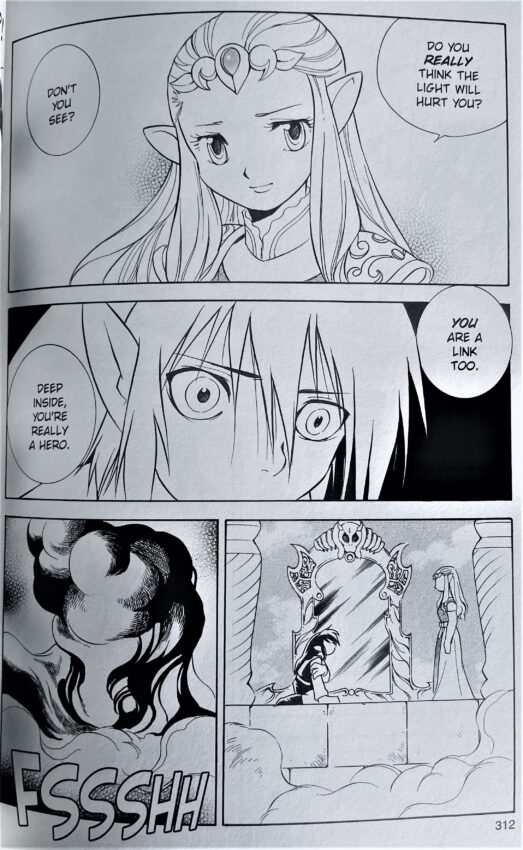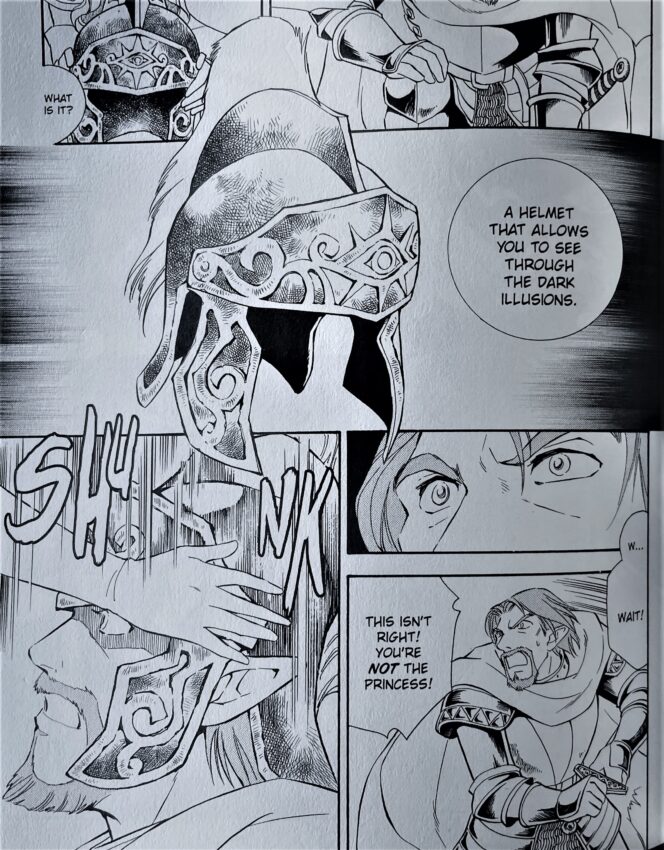Daily Debate: Would a Potential Four Swords Sequel Benefit from Taking Story Notes from the Manga?
Posted on March 22 2024 by Nicole Scott

Warning: This article contains spoilers for the Four Swords manga and Four Swords games.
The multiplayer Zelda games are less story-rich than their solo-campaign counterparts. Some would argue that the original Four Swords contained barely a story at all. Instead, the game put all of its Rupees in the gameplay Wallet. Four Swords Adventures went many steps further, but was it enough?
Akira Himekawa, the pen name for the writing and illustrating duo for the Zelda mangas, faced this challenge when crafting their stories. Without gameplay to distract readers, the content had to contain more substance. So, with some artistic license over the source material, the artists expanded on the original Four Swords Adventures story with more plot points and deeper characterization.
Let’s start by summing up and comparing the stories of the game versus the manga. In Four Swords Adventures, Link, Zelda, and the Shrine Maidens discover that the seal securing the Wind Mage, Vaati, is no longer stable. Multiple copies of Shadow Link are coming out of a Dark Mirror controlled by Ganon. One captures the Maidens, traps Zelda, and sends victims to the Dark World. It makes Link release Vaati again so he can wield the Four Sword, splitting himself into four heroes donning green, red, blue, and purple tunics. Ultimately, the Links are victorious and the Maidens create an impenetrable barrier around the freshly-sealed Four Sword forever.
It’s a fairly straightforward plot that wouldn’t do as well keeping readers’ attention in a 362-page manga. The most prominent differences are in characterization, leading to more plot conflicts. The games are about teamwork, which had to translate to the page.

In the opening scenes of the manga, Link’s father scolds him about his inability to work with other knights. Splitting himself with the Four Sword forces him to interact with the other parts of his personality, who constantly battle each other. Who wants to witness their laziness, bull-headedness, pretentiousness, and more concentrated into individual bodies? It is one of the few times Link’s personality is so strictly outlined, especially with flaws. In other games, he is typically drawn as the silent, unwavering, all-powerful hero. The change is a breath of fresh air.
The most notable difference is Vio, the purple Link, who prides himself as the knowledgeable one in the party. Constant bickering splits the party multiple times — which doesn’t happen in-game — causing Vio to accept a partnership to work with Shadow Link on the dark side. The tension is palatable, as Zelda fans know no part of Link would do that, even in separate pieces. It was a smart decision on Himekawa’s part to challenge the beliefs of Zelda fans, letting them theory-craft Vio’s motivations and Shadow Link’s willingness to seek a friend.
When the other Links discover the betrayal, Green duals Vio and seemingly perishes. Shadow Link then trusts Vio completely. You would think the other Links would dismiss their counterpart by now, but the reader discovers the “death” was all an act to help Vio gain Shadow Link’s trust. This unyielding bond between the Links is most visible here, because Green, Blue, and Red know Vio must be doing this for a good reason — and they were willing to risk it all.

Shadow Link’s connection to Vio is almost heartbreaking, as he admits he views him as his closest confidante. In several frames, you can see Vio’s pained eyes as he feels guilt for duping him for information to help the other Links, especially after he finds out about the Dark Mirror and tries to destroy it, and Shadow Link by proxy.
Another massive deviation happens on the way to the boss fight — Vaati disguises himself as Princess Zelda to trick Link’s father. He places a cursed helmet on him, forcing him to fight against his son. Imagine a boss fight in a Four Swords title where you fight your family — it would be intense!
Eventually, the four Links work with Shadow Link to bring down Ganon and Vaati in a dramatic moment of character development. Link achieves a higher sense of self-awareness and self-acceptance never before seen in the games.
Were the risks worth it, and should Akira Himekawa’s choices to expand on the original game inspire a Four Swords sequel that tries harder to dazzle audiences with deeper characterization and a more captivating plot?
I would argue that the changes improved upon the concepts presented in the game, though they rely significantly on giving Link the ability to speak. However, through storytelling methods like Breath of the Wild’s journals, we’ve seen aspects of Link’s personality come out in ways not driven by dialogue.
What plot or character elements from the manga — if any — should carry into subsequent Four Swords titles? Let us know in the comments!

Nicole Scott is writer for Zelda Dungeon from suburban Appalachia. She loves drinking espresso, seeing live music, building LEGO sets, being a completionist, and snuggling her two probably-alien cats, Tizo and Alarielle.






